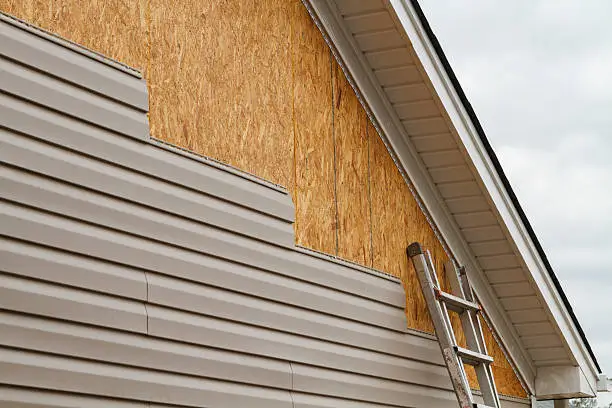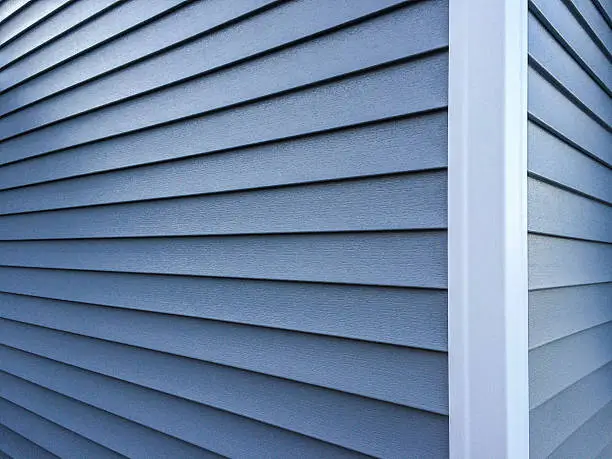Will Homeowners Insurance Cover Vinyl Siding in Branson, MO?

Homeownership comes with its joys and challenges. One of the challenges many homeowners face is dealing with damage to their property. In Branson, Missouri, where severe weather events like storms and hail are not uncommon, protecting your home’s exterior, including vinyl siding, is essential.
But what happens if your vinyl siding sustains damage? Will your homeowners’ insurance cover it? Let’s explore this question and the ins and outs of homeowners insurance coverage for vinyl siding in Branson, MO.
Understanding Homeowners Insurance Coverage in Branson, MO:
Homeowners insurance is designed to offer financial protection for your home and its components, including exterior features like siding. However, the extent of coverage can vary based on several factors. In Branson, Missouri, where severe weather events are a common occurrence, understanding the nuances of your insurance policy is crucial.
Insurance policies typically outline covered perils, such as windstorms, hail, fire, vandalism, and more. These perils dictate whether damage to your vinyl siding will be covered. Additionally, policy limits and deductibles play a significant role in determining the extent of coverage you’ll receive. It’s essential to review your policy carefully to understand these details and ensure you have adequate protection against weather-related damage in Branson.
Moreover, homeowners should be aware of any exclusions in their policy that may limit coverage for certain types of damage or circumstances. By staying informed about your policy’s terms and conditions, you can make informed decisions about protecting your home and its exterior, including vinyl siding, from potential risks.
Coverage for Vinyl Siding Damage:
Vinyl siding is a popular choice for homeowners due to its durability and low maintenance. However, it is not immune to damage, especially in areas prone to severe weather. When it comes to homeowners insurance coverage for vinyl siding in Branson, MO, there are a few key factors to consider:
- Covered Perils: Homeowners’ insurance policies typically cover damage caused by specific perils, such as windstorms, hail, fire, vandalism, and more. If your vinyl siding is damaged due to a covered peril, your insurance policy may cover repairs or replacement.
- Policy Limits and Deductibles: It’s essential to review your homeowners’ insurance policy to understand its limits and deductibles. These factors can affect how much coverage you receive for vinyl siding damage. If the cost of repairs exceeds your policy’s limits or deductible, you may be responsible for covering the remaining expenses out of pocket.
- Exclusions: Some homeowners insurance policies may exclude certain types of damage, such as wear and tear or neglect. Additionally, coverage for cosmetic damage to vinyl siding, such as fading or discoloration, may be limited or excluded altogether. Reviewing your policy’s exclusions can help you understand what types of damage may not be covered.
Filing a Claim:
If you find yourself facing damage to your vinyl siding that you believe falls under the coverage of your homeowners’ insurance policy, it’s essential to take prompt action by filing a claim with your insurance provider.
Start by meticulously documenting the damage, capturing clear photographs from various angles to provide a comprehensive visual record. Additionally, keep detailed records of any repair estimates or invoices associated with the damage.
Once you have gathered all necessary documentation, reach out to your insurance agent or company without delay to initiate the claims process. They will guide you through the steps and requirements for filing a claim effectively. It’s crucial to follow their instructions carefully to ensure a smooth and efficient resolution to your claim.
By promptly reporting the damage and providing thorough documentation, you can help expedite the claims process and increase the likelihood of a favorable outcome. Your insurance provider will assess the situation based on the terms of your policy and determine the appropriate course of action to address the damage to your vinyl siding.
Working with a Contractor:
After your claim receives approval, the next step is hiring a contractor to address the damage to your vinyl siding. It’s crucial to select a contractor with a solid reputation and expertise in handling insurance claims. Look for professionals who have experience working with insurance adjusters and understand the complexities of home insurance coverage.
Your chosen contractor will collaborate closely with the insurance adjuster to ensure that the repairs or replacement meet your expectations and align with your policy’s coverage. They will provide estimates, timelines, and detailed plans for the restoration process, keeping you informed every step of the way.
Throughout the repair or replacement process, your contractor will prioritize quality workmanship and compliance with your insurance policy’s requirements. They will address any concerns or questions you may have and strive to restore your vinyl siding to its pre-damage condition.
By entrusting the repair process to a reputable contractor, you can have peace of mind knowing that the restoration of your vinyl siding is in capable hands. Effective communication and collaboration between you, the contractor, and the insurance adjuster will ensure a satisfactory outcome and a seamless resolution to the damage.
Preventing Future Damage:
While homeowners insurance offers vital financial protection against unforeseen damage to your vinyl siding, taking proactive steps to prevent future issues is equally crucial. Engaging in regular maintenance practices, such as cleaning and inspecting your siding, can play a significant role in safeguarding your home’s exterior and minimizing the risk of damage.
Routine cleaning removes dirt, debris, and pollutants that can accumulate on your vinyl siding over time, helping to preserve its appearance and integrity. Additionally, thorough inspections allow you to identify any signs of wear, damage, or deterioration early on, enabling prompt intervention before minor issues escalate into more significant problems.
Furthermore, proactive maintenance measures may include caulking gaps or cracks, repairing loose or damaged siding panels, and addressing potential drainage issues around your home’s foundation.
By addressing these issues promptly, you can prevent water infiltration, mold growth, and structural damage, ultimately extending the lifespan of your vinyl siding and reducing the likelihood of costly repairs or replacements in the future.
Incorporating regular maintenance into your home care routine not only protects your investment but also ensures that your vinyl siding continues to enhance the aesthetic appeal and structural integrity of your home for years to come.
Conclusion:
In Branson, MO, homeowners insurance can offer valuable protection against damage to vinyl siding caused by covered perils such as storms, hail, and fire. However, it’s essential to review your policy carefully to understand its coverage limits, deductibles, and exclusions.
By being proactive about maintenance and understanding your insurance coverage, you can safeguard your home and enjoy peace of mind knowing that you’re prepared for whatever comes your way.
Ready to safeguard your home with comprehensive home insurance coverage in Branson, MO? Contact us at RIG powered by G&G Independent Insurance to review your policy and ensure you’re adequately protected!

